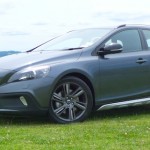
How do you go from selling 250 cars a year to 400 – all in the space of 12 months or so?
Ask Volvo New Zealand general manager Stephen Kenchington, because that’s the target he’s set for his dealers in 2014, after a “disappointing year to date” in 2013.

The new number boils down to growth of more than 60 per cent. Ambitious? You betcha. But Kenchington reckons he can pull it off.
He expects Volvo’s entry into the V8 Supercars extravaganza from next year will help lure new business (there is already evidence of that in Australia). The Volvo Ocean Race in 2015 will help, too.
So will a bigger marketing budget for New Zealand, more staff to make use of it, and a swept-up new look for Volvo’s dealer network.
The expansion here is being bankrolled by Volvo’s Chinese owner Geely and is part of increased investment into the wider Asia-Pacific market.
Geely – head-quartered in Hong Kong – is spending many billions of dollars worldwide in a bid to make Volvo a name on every luxury buyer’s lips.
In short, it wants Sweden’s Volvo to be a major luxury carmaker by 2017, ranking with the best from Germany and Japan.
Therein lies a problem, certainly in this part of the world. Down here the brand isn’t recognised as an alternative to a Mercedes-Benz, BMW, or Audi. It’s mostly German versus German.
Why this is so has never been understood by executives at Volvo HQ, who beat themselves with branches of birch and jump naked into snow drifts at the thought of their beloved brand being compared with, say, Subaru.
Kenchington’s task is to lift Volvo’s profile in New Zealand to the point where he can convince the driver of a top-end German or Japanese car to instead get into some Swedish steel.
“We have to look like a luxury car if we are going to compete in the luxury sector,” says Kenchington. “The current issue is visibility – we are not on enough shopping lists.”
One thing on his side, in the SUV market at least, is the all-wheel-drive XC60, priced between $69,990 and $89,990.
There is nothing in a segment that occupies roughly 30 per cent of the overall NZ market that matches the classy interior design of the facelifted XC60. Case closed.
Overall, however, Kenchington has to figure out how best to capitalise on Volvo’s new range of vehicles, the most in one year for the carmaker.
He got off to a reasonable start late last year with the V40 hatchback and in an advertising campaign that poked fun at German rivals.
But supply from the V40 factory in Belgium pretty much stopped and the Germans had the last laugh. “The model year ’13 (supply) ended early and the model year ’14 started late – I didn’t get a V40 for three months this year,” says Kenchington.

There are savings to be made on the 2014 models, as much as $7000. But: “Lowering the price is not the answer to getting business,” he says. “For us it’s about profitable growth.”
The front-drive and all-wheel-drive line-up bristles with the latest safety aids and begins with the V40 hatchback range, a mix of petrol and diesels priced between $47,990 and $58,990. The premium go-fast R-Design is $64,990.
The V40 Cross Country, taller and more aggressive looking than the hatchback, sits between $62,990 and $66,990.
The V40 Cross Country is the “sleeper”, aimed at a “huge market from those buyers who want the look of an SUV but don’t need four-wheel drive,” says Kenchington.
The S60 sedan starts at $67,990; the V60 wagon at $69,990. Kenchington has taken between $5000 and $7000 off the XC70 and XC90 models.
Now all he has to do is sell them. Six to seven hundred cars a year by 2017 can’t come quick enough.
• Volvo aims to build cars that are almost impossible to crash. It says: “Our vision is that nobody is killed or inured in a new Volvo by 2020.” Please view the video of the new XC90 at the top of this article.
